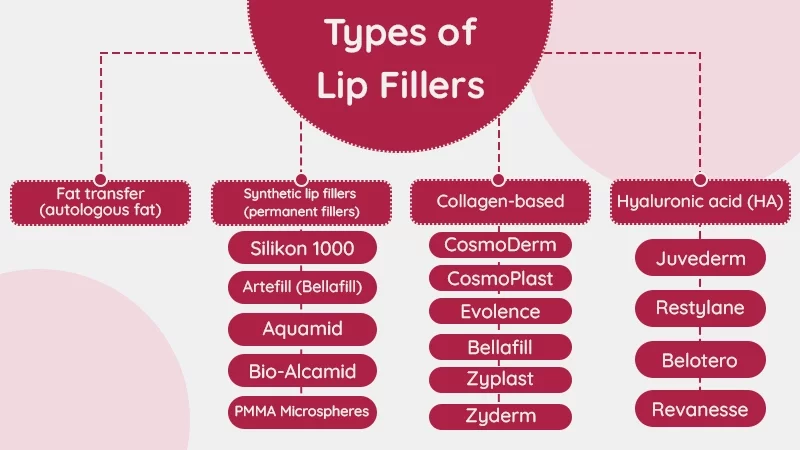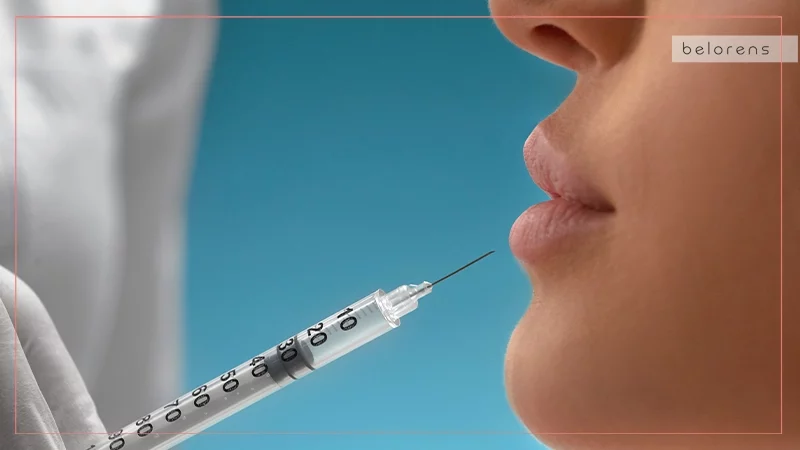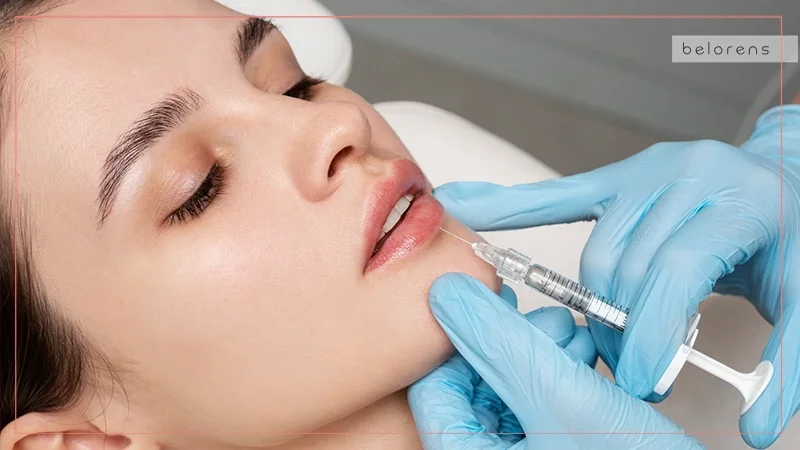Published on 20 June 2024
Different Types of Lip Fillers and How to Choose the Right One
- ByMedical Content Team
- Medically Reviewed byDr. Sabine Kulhanek
Fact checked

Lip fillers have become a popular cosmetic procedure for enhancing lip volume, definition, and symmetry. These injectable treatments offer a quick and effective way to achieve fuller lips and address various concerns, from thin lips to fine lines around the mouth. However, with the plethora of options available, understanding the different types of lip fillers is crucial for making informed decisions and achieving desired results.
Each type of lip filler is formulated differently, with unique properties and characteristics that influence the treatment outcome. Factors such as ingredients, longevity, and potential side effects vary among lip filler options. Therefore, gaining knowledge about the various types of fillers empowers individuals to choose the most suitable option based on their aesthetic goals, preferences, and medical history.
By understanding the differences between hyaluronic acid fillers, collagen fillers, fat transfer fillers, and synthetic fillers or permanent fillers, individuals can make informed decisions in collaboration with their healthcare providers. This knowledge enables them to select a filler that not only addresses their specific concerns but also aligns with their expectations regarding results, longevity, and safety.
In essence, educating oneself about the different types of lip fillers is key to achieving natural-looking and satisfying outcomes while minimizing the risk of complications. It empowers individuals to engage in meaningful discussions with their providers, ask pertinent questions, and ultimately make choices that enhance their confidence and satisfaction with their appearance.
What are the main types of lip fillers?

Lip fillers can be categorized based on the materials used in their composition, which influences their texture, longevity, and effects. Here are some common types of lip fillers categorized by composition:
Hyaluronic acid (HA) lip fillers
Hyaluronic acid is a naturally occurring substance in the body that helps maintain skin hydration and volume. Hyaluronic acid fillers are a popular choice for lip augmentation procedures due to their soft and gel-like consistency, which provides natural-looking results and makes them ideal for adding subtle volume and enhancing lip contours. HA fillers can address various lip concerns, including thin lips, asymmetry, and fine lines around the mouth. They can also be used to define the lip border and create a more defined cupid's bow.
Hyaluronic acid fillers typically last between 6 to 18 months, depending on factors such as the type of filler used, the individual's metabolism, and the treatment area. Some fillers may break down more quickly in areas with a lot of movement, such as the lips, while others may last longer in areas with less movement, such as the cheeks. Additionally, lifestyle factors such as sun exposure, smoking, and alcohol consumption can affect the longevity of hyaluronic acid fillers.
Since hyaluronic acid is a naturally occurring substance in the body, HA fillers are generally well-tolerated and have a low risk of allergic reactions. Additionally, they can be dissolved using hyaluronidase if needed, providing a reversible option for patients.
Hyaluronic acid lip filler brands
Some well-known brands of HA lip fillers include:
- Juvederm
- Restylane
- Belotero
- Revanesse
Collagen-based lip fillers
Collagen-based lip fillers are made from purified bovine or human collagen, which is a protein found in the skin that provides structure and elasticity. These fillers typically have a smooth, gel-like consistency and are designed to add volume to the lips and improve their overall shape.
Collagen-based fillers were once a popular choice for lip augmentation but have become less common in recent years due to the development of newer, more advanced fillers, such as hyaluronic acid fillers, which offer longer-lasting results and fewer allergic reactions.
One drawback of collagen-based fillers is the potential for allergic reactions, as they are derived from animal or human sources. Some individuals may develop sensitivity to collagen, leading to redness, swelling, or other adverse reactions. These fillers may require allergy testing due to potential allergic reactions, especially with bovine-derived collagen.
Results from collagen-based fillers are temporary and typically last for about 3 to 6 months. This shorter duration means that frequent touch-up treatments are necessary to maintain the desired lip volume and shape.
Collagen-based filler brands
Some well-known brands of collagen-based lip fillers include:
- CosmoDerm
- CosmoPlast
- Evolence
- Bellafill
- Zyplast
- Zyderm
Synthetic lip fillers (permanent fillers)

Synthetic lip fillers, also known as non-biodegradable or permanent fillers, are another option for lip augmentation. They are typically made of substances such as polymethylmethacrylate (PMMA), polyacrylamide, or silicone. Unlike natural fillers, which are eventually absorbed by the body, synthetic fillers are non-biodegradable and remain in the lips indefinitely.
Synthetic fillers are effective at adding volume and definition to the lips, helping to create a fuller and more aesthetically pleasing appearance. They can be used to address lip asymmetry, enhance lip projection, and improve lip contour.
One of the primary advantages of synthetic fillers is their longevity. Because they are not absorbed by the body, synthetic fillers can provide permanent or semi-permanent results, requiring fewer touch-up treatments compared to natural fillers. These fillers offer predictable and consistent results, as the injected material remains stable and intact over time. This can be beneficial for patients who desire long-lasting lip augmentation without the need for frequent maintenance treatments.
While synthetic fillers offer long-lasting results, they also carry certain risks and considerations. Because the filler material is permanent or semi-permanent, any complications or undesirable outcomes may be more challenging to address. Additionally, there is a risk of migration or extrusion of the filler material over time.
Synthetic lip filler brands
Some of the best-known brands of synthetic lip fillers include:
- Silikon 1000
- Artefill (Bellafill)
- Aquamid
- Bio-Alcamid
- PMMA Microspheres
Also Read: Types of Lips: Learn What Type You Have and How to Take Care of Them!
The following table summarizes the characteristics of the three main types of lip fillers.
| Characteristic | Hyaluronic Acid Fillers | Collagen-Based Fillers | Synthetic Fillers |
|---|---|---|---|
| Composition | Hyaluronic acid, a naturally occurring substance in the body | Collagen derived from human or animal sources | Synthetic materials such as polymethylmethacrylate (PMMA) or polylactic acid |
| Allergy Risk | Low risk of allergic reaction, as hyaluronic acid is biocompatible | Higher risk of allergic reaction, especially for those with allergies to bovine or porcine collagen | Low risk of allergic reaction, but potential for adverse reactions |
| Results | Immediate results, with gradual absorption over several months | Immediate results, but shorter duration compared to hyaluronic acid fillers | Long-lasting results, as synthetic fillers are not absorbed by the body |
| Longevity | Lasts around 6-12 months, depending on the specific product and individual metabolism | Lasts around 3-6 months before requiring touch-up treatments | Permanent or semi-permanent, with results lasting several years |
| Reversibility | Reversible with hyaluronidase enzyme injections, allowing for correction or removal if needed | Not reversible, as collagen is a natural component of the skin | Not reversible, as synthetic fillers are not broken down by the body |
| Cost | Typically moderate in cost, with variations based on the brand and volume of filler used | Moderate to high cost, depending on the brand and quantity of collagen required | Moderate to high cost, depending on the type of synthetic filler and longevity of results |
| Injection Technique | Injected using a fine needle or cannula, with minimal discomfort and downtime | Injected using a fine needle, with potential for temporary discomfort or bruising | Injected using a fine needle, with potential for temporary discomfort or swelling |
| Approved Uses | FDA-approved for lip augmentation and correction of facial wrinkles | FDA-approved for lip augmentation and correction of facial wrinkles | FDA-approved for various cosmetic and reconstructive purposes |
Comparison of Lip Filler Types: Hyaluronic Acid, Collagen-Based, and Synthetic Fillers
Fat transfer (autologous fat) lip fillers
While fat transfer is often used to augment the lips and enhance their appearance, it is fundamentally different from other types of lip fillers in terms of the material used and the procedure itself.
Fat transfer utilizes the patient's own fat cells harvested from another area of the body. This fundamental difference in filler material distinguishes fat transfer from other types of lip fillers, which have been explained above.
Fat transfer involves a more complex and invasive procedure compared to traditional lip fillers. It begins with liposuction to harvest fat from a donor site, followed by processing and purification of the fat cells before injection into the lips.
Fat transfer can offer longer-lasting results compared to hyaluronic acid and collagen-based fillers. Some of the transferred fat cells may become permanently incorporated into the lip tissue, providing more enduring augmentation.
Fat transfer carries unique risks and considerations compared to traditional lip fillers. Because it involves liposuction, there is a risk of complications associated with surgical procedures, such as infection, bleeding, or asymmetry at the donor site. Additionally, the survival rate of transferred fat cells can vary, leading to potential unevenness or the need for touch-up procedures.
In summary, while fat transfer is commonly used for lip augmentation, it differs significantly from traditional lip fillers in terms of the material used, procedure complexity, longevity of results, and associated risks. Therefore, it is more accurately classified as a separate cosmetic procedure rather than a type of lip filler.
Also Read: fat transfer
How to choose the right lip filler?

Choosing the right type of lip filler involves considering several factors to ensure you achieve the desired results safely and effectively. Here's a guide to help you make the decision:
- Consultation with a professional: Schedule a consultation with a qualified cosmetic surgeon, dermatologist, or licensed injector who specializes in lip fillers. They can assess your lips, discuss your goals, and recommend the most suitable filler for you.
- Assessment: Your provider will assess your facial anatomy, lip structure, and skin condition to determine the most suitable lip filler for you. They will consider factors such as the volume and shape of your lips, the presence of any asymmetry or wrinkles, and your desired outcome.
- Desired results: Clearly communicate your goals to your injector during the consultation. Whether you want subtle enhancement, increased volume, improved lip symmetry, or correction of lip asymmetry, your injector can recommend the appropriate filler and technique to achieve your desired outcome.
- Type of filler: Based on your assessment and goals, your provider will recommend the most appropriate type of lip filler for your needs. This may include options such as hyaluronic acid fillers, collagen-based fillers, fat transfer, or synthetic fillers. Each type has unique characteristics in terms of longevity, texture, and compatibility with your body. Discuss the pros and cons of each type of filler material with your provider. For example, hyaluronic acid fillers are reversible and typically produce natural-looking results, while fat transfer may offer longer-lasting augmentation but requires a surgical procedure
- Allergies and sensitivities: Inform your provider of any known allergies or sensitivities to ingredients commonly found in lip fillers, such as lidocaine or collagen. This will help them select a filler that minimizes the risk of adverse reactions.
- Longevity: Different fillers have varying durations of effectiveness. Some may last six months to a year, while others can last up to two years or longer. Discuss your preferences for longevity with your injector so they can recommend a filler that aligns with your expectations.
- Experience and expertise: Choose a provider who is experienced and skilled in administering lip fillers. Ask to see before-and-after lip filler photos of their previous patients and inquire about their training and credentials in cosmetic procedures.
- Cost and maintenance: Consider the cost of the procedure and any ongoing touch-ups required to maintain your results. Lip fillers typically require repeat treatments every few months to maintain optimal volume and shape.
- Potential side effects: Understand the potential side effects and risks associated with lip fillers, such as bruising, swelling, asymmetry, and infection. Your injector should provide thorough information about these risks and how to minimize them.
- Expectations: Have realistic expectations about the results of lip augmentation. While fillers can enhance the appearance of your lips, they may not achieve perfection or drastically change your overall facial appearance. Your provider will help you set realistic goals based on your individual anatomy and aesthetic preferences.
By considering these factors and consulting with a qualified professional, you can choose the right lip filler for your needs and achieve beautiful, natural-looking results.
Also Read: What Is the Best Filler for Cheeks?
Conclusion
In conclusion, understanding the different types of lip fillers is crucial for anyone considering lip augmentation. Each type offers unique benefits and considerations, from the natural-looking results of hyaluronic acid fillers to the long-lasting effects of synthetic fillers. Collagen-based fillers, although less common today, still hold significance for some individuals seeking lip enhancement. Ultimately, consulting with a qualified cosmetic professional is key to selecting the right lip filler based on individual preferences, desired outcomes, and medical considerations. By exploring the options available and making an informed decision, individuals can achieve their desired lip enhancement results safely and effectively.

